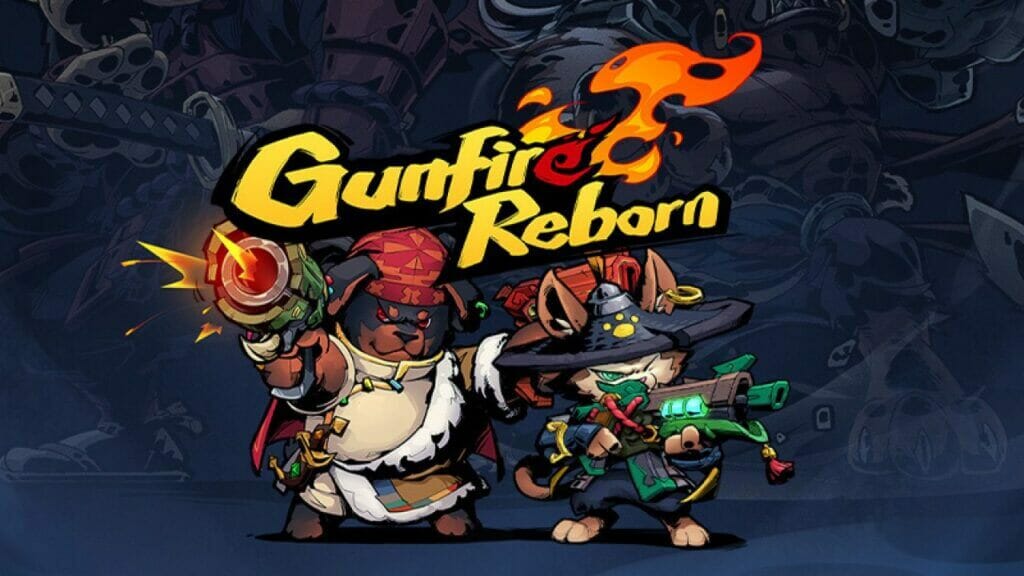In my Ziggurat 2 review, I noted I was gonna review another Roguelite FPS. This is one I almost tried in early access, it was pretty interesting-looking. But I try not to buy early access games, so I waited a good long while for it to come out.
Just quickly pumping this review out before I get my GotY stuff out (I want a quick “games I won’t review” kinda post, maybe another review, and of course the GotY 2021 celebration itself). Let’s go!
Developer and Publisher: Duoyi Games
Release date: November 17th 2021
Platforms: PC (Possibly coming to other platforms next year)
Genre: FPS roguelite
Review
So at first you play as this cat dude. You’re fighting stuff, are defeated, and end up in some inn/tavern thing, which you return to whenever you die. And that’s about where the story ends. You gotta try and defeat the big bad to end the loop or whatever. Roguelites are rarely very deep story-wise.
So when you start playing (and you can invite some friends or do matchmaking, I avoided that entirely) you’re brought into a set of 4 multi-floor areas. Each area has 5 floors, the fifth of which is always a boss battle. The first dungeon is always this semi-chinese themed underground catacomb area with terracotta warriors. The second area is always a desert level with a few ruined buildings strewn about. The third area is always the japanese-inspired port town, where you fight lantern ghosts, kappas and other japanese-themed enemies. And the final area (which is technically optional) is a snowy mountain with snow-inspired enemies. The first area is always kinda meh and unfortunately, obviously, the one you play most. All the other areas are more open and interesting to move around in, where things like sniper rifles are actually useable. One thing to note is that every floor of every area will always have the same enemy selection. For example, you basically won’t see the Longbowman enemy in the first area until you get to the 4th floor. Each area (other than the last one) has 2 possible final boss battles, though you do need to unlock the second boss of each area. Each floor has a semi-hidden Vault (colored cracks in the wall that open a portal). This is gonna be a challenge room that you have to kill everything in for a reward (and some obstacle courses). At the end of every floor is a chalice (and sometimes you get one of these in Vaults), which you grab to get a power-up, usually to your primary or secondary skill. You can get both your secondary and primary skills to be pretty powerful, which is nice.
Combat is pretty simple, as you shoot at enemies, trying to hit the head (or the back of the one enemy who isn’t weak from headshots) for critical damage. You can strafe around and stuff, like every FPS in the last 20 years. For more standard crit damage, here’s it’s called Lucky Shot, where you have a chance of dealing more damage. Otherwise combat is about using your primary and secondary skill for crowd control/extra damage, as you shoot shit. It’s fun and fast. There’s actually several playable characters here. I mostly played with the starting character, the cat. Each character has some different starting stats (for things like health and speed), and different primary and secondary skills. So some characters are more geared towards different weapon types, like the bird being heavily melee focused. The cat just ends up being very useful for crowd control, with his decay-causing grenades and enemy-stopping energy orb, so I focused on him since crowd control is pretty important and the other characters are a bit less good with that.
Going through these levels, there’s a few types of pickups. Killing enemies or breaking certain objects in the environment lands you some money, ammo, grenades and healing buns. Enemies also drop guns sometimes. Grenades give you more charges for your secondary skill, the rest is obvious. There’s 2 types of power-ups you may find alongside this. Weapons are pretty important. The main gun you start with is ass. You have 3 slots to carry guns, though one of them is always gonna be the main gun (since that one has infinite ammo reserves, in case you run out on the other 2 guns). There’s 48 weapons in the game, and actually a good amount of them are very useable. The first gun or two you start with is just normal, but any following guns dropped by enemies are gonna have a + value. This gives the gun better damage stats. Also guns have inscriptions, basically special effects. This can be rate of fire (RoF), damage, number of projectiles. Initially guns are generally gonna have 2 normal inscriptions, but as you progress through the games, guns get more inscriptions, as well as the chance for high or even exclusive inscriptions which are much better than normal ones. There’s also Gemini inscriptions on later guns, which only have an effect if both of your guns have the same one. So even if you have your favorite gun right at the start of the game, you’ll HAVE to get rid of it eventually because it won’t be keeping up, even if you upgrade it, because it’ll be stuck with those early inscriptions.
Weapons are separated between 3 ammo types (separated by color for your convenience). Melee weapons like swords, pistols, submachineguns, shotguns, launchers, rifles and a couple others. Some weapons count in categories you may not expect, like kunai counting as pistols, and the Illusion (a machine gun that is also a shotgun) counting as a shotgun. Out of all 48 guns, there’s only a few I’d say are basically unusable, those being the Foundry (which is the shitty starting gun), the Rainbow, and I’m not a fan of the gloves and swords. There’s definitely guns I like more than others. I don’t think many guns are better than the Illusion and I have a weird love for the kinda-meh Golden Bow.
The other type of upgrade is occult scrolls. Those are sometimes dropped by enemies, usually in rooms that trigger “challenges”, as well as a reward for beating bosses and beating Vaults. Occult scrolls are a variety of pretty interesting power-ups of different varieties. Stuff like extra lucky shot percentage in different situations, more dashes (which is good because movement is otherwise ass in this game), faster dash cooldown (ditto on that), and all sorts of interesting stuff. There’s some that function a bit weird, like the ones that give you the same status effect that you apply to enemies… those don’t work I think, they’re meant to buff you if you get that status effect (like the one for Decay, it’s meant to give you +40% movement speed, but the decay itself still gives you -50% movement speed so… why is this a thing? It only gets kinda useful if you also get the Corrosion Shard which makes you immune to the negative effects of decay, but what’s the chance you’ll have both? There’s 134 scrolls in the game, after all). You can still get some pretty good scroll setups to get kinda OP in different ways. There’s also a few Cursed Scrolls, which are downgrades. Usually you get those as a choice to get some different upgrades (and there’s one normal scroll that gives you power ups for each cursed scroll, fun!). How you unlock occult scrolls for later runs is to do a bunch of challenges, may it be killing enough of a specific type of enemy or whatever. Actually some early runs of this game have you getting a LOT of occult scrolls, as when you unlock an occult scroll for later use, you also get it right then and there too, so you can get just a ton of them more than later runs where you don’t get as many because you just don’t have that many challenges left to do. Kind of a weird balance there.
There’s 2 types of merchants that may be strewn around the levels (and are always waiting before the boss battles in the final floor for each area). The Peddler is just a shop. He always has healing, ammo and grenades, but he’ll also have a random selection of guns and, sometimes, scrolls. Pretty straightforward, give the guy money and he gives you stuff. The Craftsman has a few features, and gets better as you upgrade him. At first you can give him money to give +1 to a selected weapon, which is mostly useful later in the game once you’ve mostly finalized your weapon choices for the run. The Craftman can do a few extra things if you upgrade him, including etching more inscriptions on weapons, changing the gemini inscription on a weapon (to try and get the same on both weapons) and rerolling inscriptions. Fun!
And the last thing to talk about is the permanent upgrade system. You get those soul coin thingies from enemies sometimes that I forgot to mention earlier. You use those in 2 ways: you can use it to unlock characters, or fill up a skill tree which levels you up permanently. There’s a few different skill trees for different kinds of upgrades. Damage, health, uses for secondary skills, money drops, item sale price reduction, powering up the craftsman, and many others. As you unlock more stuff you get access to a few extra things, like a few occult scrolls, more lines in the skill tree and a couple of characters. Each character has a single line as well where you can upgrade their primary and secondary skills.
Overall
Gunfire Reborn is definitely funner than Ziggurat 2, but it does suffer from pretty similar issues. It does have more interesting weaponry (and decent variety), funner gameplay, actually some pretty cool power-ups, and if you’re into multiplayer, this game actually has that.
But the repetitiveness, which is to be expected from this genre, is a bit much. Namely, despite the levels drawing from a lot of different room designs to build the “dungeons”, still end up feeling exactly the same really fast. You’re always fighting the exact same enemy selection in every level of every area, for example. So fourth floor of the first area will always have the same set of enemies, regardless of the very minor level changes (which don’t feel like changes). Every area has 2 possible final bosses, so at least that’s some variety.
I would recommend this game.








Leave a reply